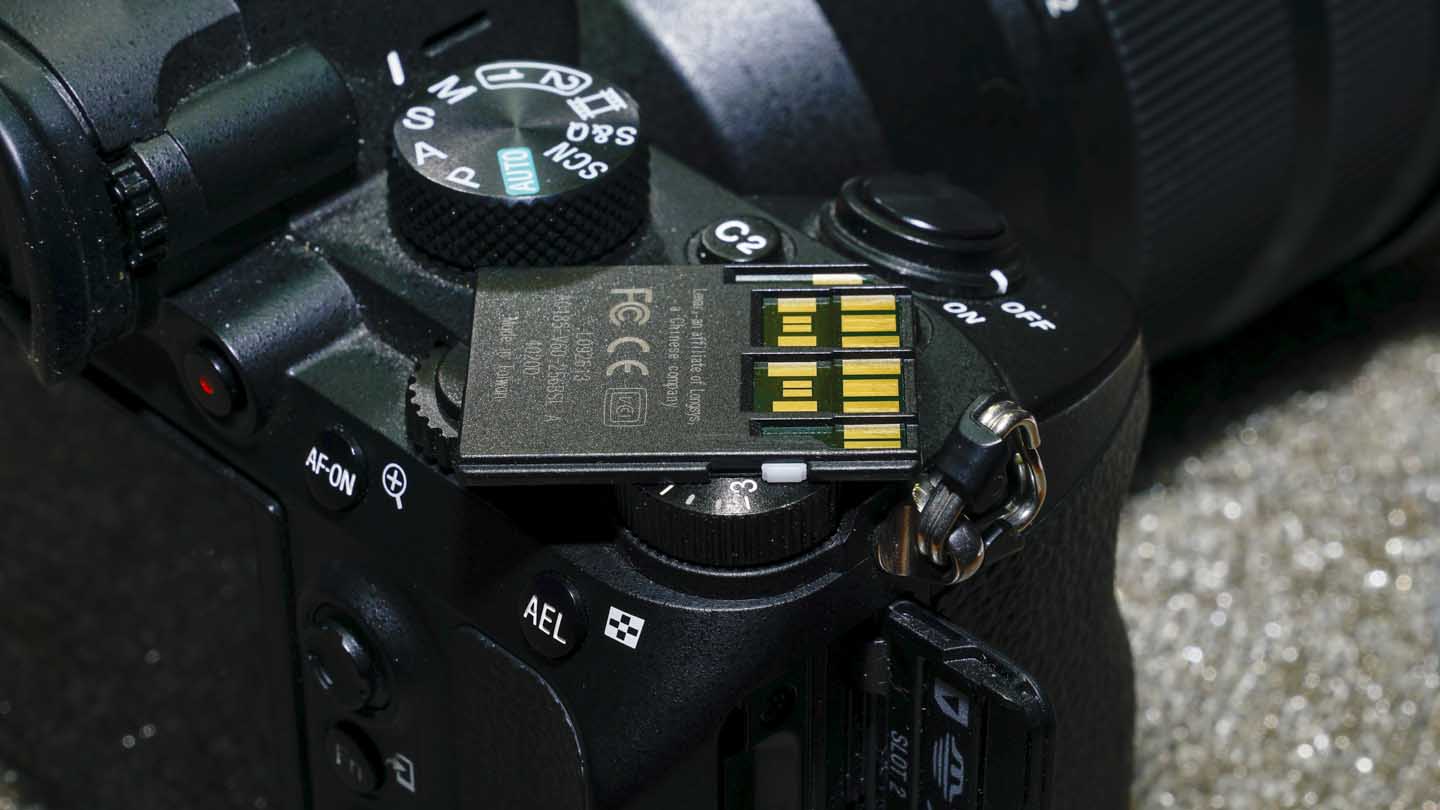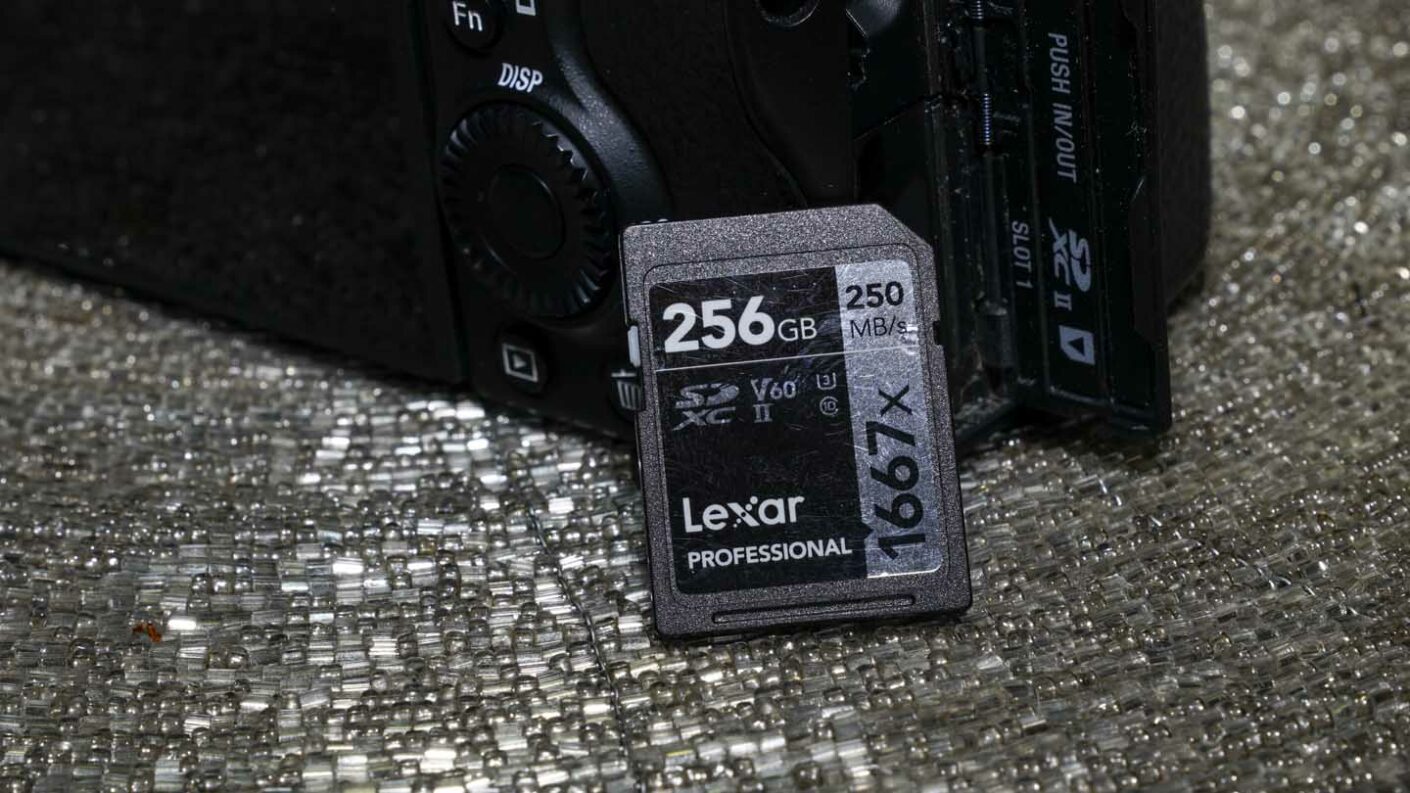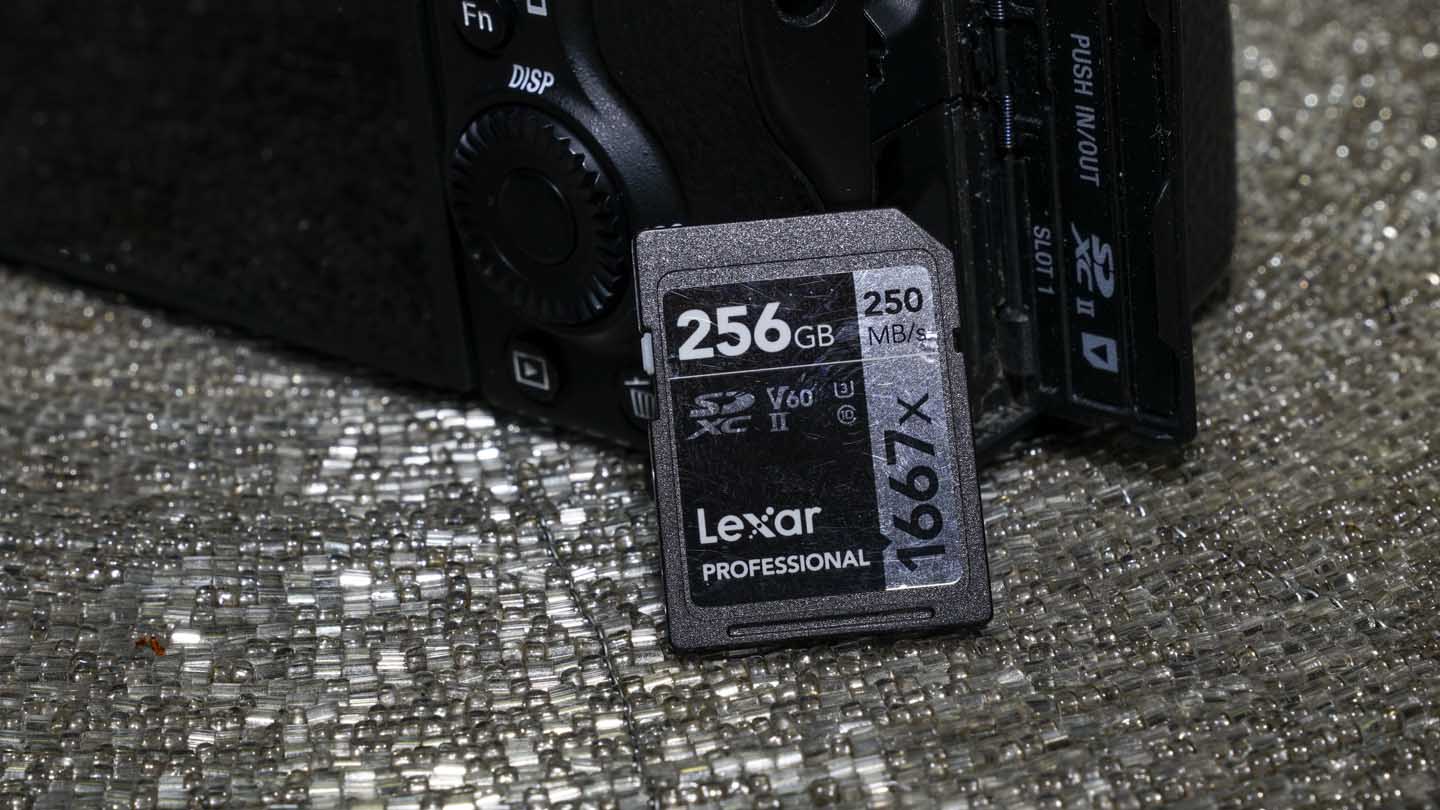This card is a great price, but that means nothing if it can’t keep up with the speeds demanded of it by the latest cameras.
The ratings all check out, and while it may not have the huge write speeds of some of the UHS-II cards, 100Mb/s is still impressive.

To put the card to the test, I first used it in the Sony A7 III for a portrait shoot, after a morning of being slightly over trigger happy, the camera and card kept up. No real issues with buffering as the cards speed to write down those 24MP files were more than sufficient.
Next up was shooting 4K at 30fps, 100Mbps – again, the card recorded solidly for 29 minutes before the camera timed out. Having that 256GB of storage also meant that all video was captured to one card, which is convenient.
The real-world tests highlighted that the Lexar Professional 1667x SDXC UHS-II Card is more than sufficient for mid-range DSLRs and mirrorless cameras. More than able to keep up with the action and safely record down all data required.
The next test was to run the card through the Blackmagic Disk Speed Test application. Again the card performed well, delivering high-speed close to the claimed rates:
Read: 228MB/s
Write: 100MB/s
The results from this card are impressive, with excellent read and write speeds that match the requirements for most cameras at the moment. It can comfortably keep up with 4K, 30fps at 100Mbps.






